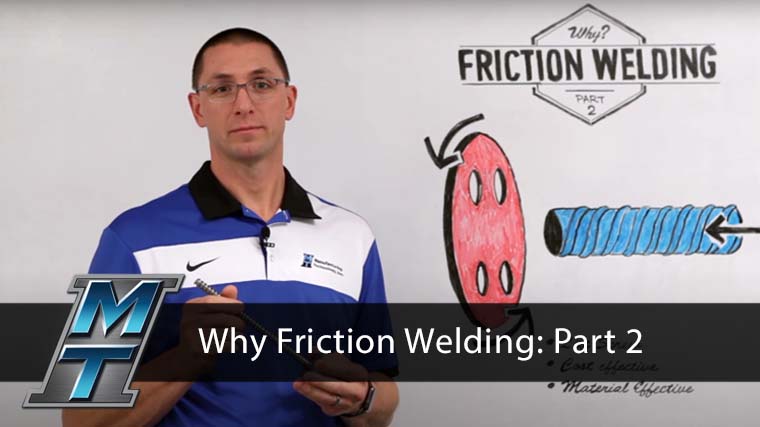
One small part — the lift screw — is a great example of what makes friction welding so useful. It’s a part you might find in an automobile power seat, or in the wing of an airplane, where it helps raise and lower the flaps.
There are a couple traditional ways to produce a lift screw:
- It could be made from a forging — but that would be expensive, especially as its threaded rod gets longer.
- Or it could be machined out of a single piece of bar stock, which would have to be the same diameter as the flange.
As you can imagine, these options tend to result in a lot of material waste.
Friction welding, however, allows us to make the lift screw out of two different pieces. We can pre-machine the flange to the right size ahead of time, and then use a threaded rod right off the shelf. The rod can then be cut down to the correct length. When the rod and flange are friction welded together, the finished part ends up being the same quality as a single-piece forging.
There is another benefit as well. The lift screw can be made out of two different materials. The friction welding process allows this option — and gives an engineer the creativity to only put the more expensive material where it’s absolutely needed.
Find a Better Way
MTI specializes in solving challenging manufacturing problems. Every day, we use our knowledge to create an incredible range of customized parts. Whether you’re in the business of building trucks, engineering planes, or launching into space, MTI can help. We’ll build a machine for that makes your part, we’ll make the part for you, or we’ll help you make the part even better.
Contact us to discover how friction welding can help you
 MTI UK
MTI UK  FWT
FWT